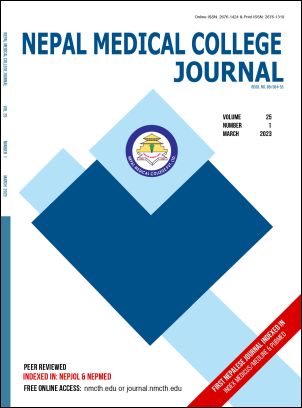Histochemical study of acid mucins in osteoarthritic menisci of the human knee joint
DOI:
https://doi.org/10.3126/nmcj.v25i1.53380Keywords:
Histochemical, proteoglycans (acid mucins), osteoarthritic, menisci, human knee jointAbstract
Knowledge regarding changes of proteoglycans (acid mucins) in human osteoarthritis (OA) meniscus may help in understanding development of meniscal degeneration. Therefore, present study was planned to know changes in acid mucins in human knee OA menisci by histochemical analysis of different parts of medial and lateral menisci of both legs. Medial and lateral OA menisci were collected from 110 human knee joints of both sexes. Normal meniscal tissue of sheep was taken as control and studied for histological stain with alcian blue pH 2.5, to find acid mucins changes in OA menisci. Data were analyzed by bivariate and one-way ANOVA using MS-Excel. Osteoarthritis is more common in females than males. OA changes were found to be more on right side in females and on left side in males, while OA was more common in both legs in number of cases in 60-69 years. Further, decreased staining intensity for acid mucins was observed in different parts of medial and lateral OA menisci of both legs than control meniscus. A significant change in level of acid mucin was observed at anterior, middle, and posterior parts of medial and lateral OA menisci of both legs (P-value=0.0306). Significant changes in acid mucins in human OA meniscus provide information on scientific evidence of OA progression, which could help health professionals in development of structure-modifying drugs for OA therapy.
Downloads
Downloads
Published
How to Cite
Issue
Section
License
Copyright (c) 2023 Nepal Medical College Journal

This work is licensed under a Creative Commons Attribution 4.0 International License.
This license enables reusers to distribute, remix, adapt, and build upon the material in any medium or format, so long as attribution is given to the creator. The license allows for commercial use.




